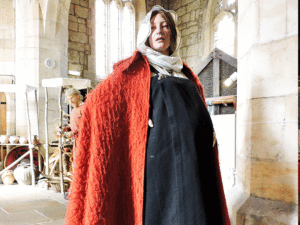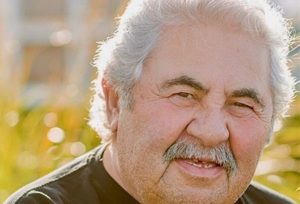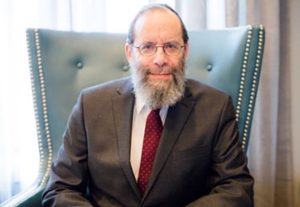History-drenched Yorkshire offers a myriad of famous places to visit. Before my daughter and her family moved to the City of York two years ago, I had visited “literary” Yorkshire – notably the quaint village of Haworth, where the Bronte sisters grew up on the edge of the moors, spending their childhoods inventing magical realms before penning classic novels like Wuthering Heights and Jane Eyre.
Yet Yorkshire is much older than the Victorians. Much earlier the City of York – the county’s cultural hub – was home to Constantine the Great, proclaimed Roman Emperor here in 306 CE. Today his brooding, handsome statue has pride of place outside the grand Minster, close to the warren of medieval streets known as the Shambles.
Most people know about “1066” – the year the Normans conquered Britain – but fewer realize that by 866 CE, Vikings – Danes mostly – had moved in after the Roman Empire crumbled, making the town of Yorvik – or Jorvik – a trading and manufacturing city. Current films and TV shows have drawn new audiences into the somewhat exotic and often violent Viking world, but the same folk, by contrast, are rather fondly regarded in York.
“I was a Viking last year,” my five-year-old granddaughter informs me – her first-year school classes were divided into Romans and Vikings – one sunny Saturday, as we queued for entry into the Jorvik Centre, a treasure trove of Viking lore and artifacts.

It wasn’t until 1976 that archeologists discovered a 1,000-year-old Viking city deep under Coppergate, a York street that means “Cup makers’ street” in Norse. Five years of digging revealed copious evidence of a very old world indeed. When the Jorvik Centre opened, it quickly became one of Britain’s most popular tourist attractions. Kids and adults love it – a transparent ground floor acts as a visual treasure hunt for Viking objects nesting in the earth: amber jewelry, earth stained red from the process of dyeing cloth, and there’s even a toilet, much to the delight of the youngsters racing from spot to spot.
Clever interactive exhibits allow us to imagine ourselves as archeologists-on-the-hunt. Another highlight comes when we climb aboard a train for a slow tour through a simulated Jorvik, where eerily life-like figures go about their daily lives, making clothing, fashioning crafts, cooking meals. Domestic life is on full display – one couple argues over what to have for dinner. As well as being family-focused, Jorvik is shown as surprisingly diverse – all sorts of languages are being spoken, since scholars have discovered that Viking society was, in fact, a multicultural stew.
“Welcome back to 2017,” says the attendant to a delighted child as we disembark. Soon we’re entranced by another costumed fellow who shows the children the different kinds of coins he’s carrying in his leather purse – we can buy replicas in the gift shop upstairs – but the coins “Ragnarok” shows us seem like the real thing. His evident delight with his Viking persona – from braids and clothes to tales of Jorvik/York life – is contagious. “Where did the Vikings go when they were defeated?” I ask another helpful Viking. (Danish Yorkshire was conquered by the English in 954 CE.) “Oh, they never left,” she responds. Looking around, it seems they haven’t.
Since my visit occurred during school holidays, we sampled the English tradition of the “day out,” hopping aboard the train from York to Leeds, grandkids in tow. Thirty minutes later we arrived in Yorkshire’s commercial hub, renowned for its glorious Industrial Age shopping arcades, its university, theatre, and its lively nightlife. Leeds first shot to importance as the centre of the British wool trade; today its population is four times greater than York’s, and its international airport offers holidaymakers flights to a smorgasbord of destinations.
READ: TEL AVIV’S INDEPENDENCE TRAIL WEAVES PAST, PRESENT, FUTURE
But first, we shop. For Leeds has long been a shopping town, and rightly claims pride of place in British retail history. A Jewish vendor named Michael Marks launched his first discount market stall at Kirkgate Market in 1884, under the slogan, “Don’t ask the price, it’s all a penny.” Marks later partnered with Spencer, and M&S remains a major presence not only in Britain but also globally online. Our first stop, therefore, was the market where it all began, and where we chose a Thai place for lunch – all of Yorkshire being multicultural these days.
Asking directions to the Arcades, we encounter two friendly ladies who helpfully hand us town maps. A fellow selling the Big Issue (England’s national homeless newspaper) tells us he has relatives in Ontario and would love to visit. Dazzled by the soaring skylights of a Victorian Arcade, we listen to a young man playing tunes on a sparkling white piano, surrounded by shoppers sipping coffees.

The Royal Armouries Museum – a hugely popular draw, part of the gentrification of the old Leeds-Liverpool Canal area – continues this genial theme. Kids love it here – there are five galleries featuring arms and armour from ancient and modern times in Britain, to Asia and the American Wild West – with frequent and lively demonstrations. In one of the halls where “battles” take place, we spoke to a “Saxon” warrior, his mock-battle just concluded. Smiling, he talked to the children about his chainmail, how heavy and hot it was, and how he longed for a nice cup of tea. War isn’t fun, of course, but re-enactments can be and the British do know how to put theirs – and the world’s – long and varied military history on show.
“Reality leaves a lot to the imagination,” reads a quote on the Royal Armouries wall, penned by John Lennon. The Beatle’s line seems to capture today’s mood in Yorkshire’s interactive museums, where imagination rules.
For more information: www. VisitYork.com; jorvikvikingcentre.co.uk; www.visitleeds.co.uk; www.royalarmouries.org






